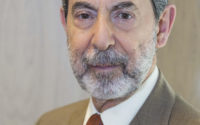Government’s Focus On Balancing Growth And Stability To Buoy KSA Property Market, Says JLL
While much of 2020 was prioritizing the response to COVID-19, Saudi Arabia remained focused on growth and stability, long-term economic sustainability, diversification and an enhanced quality of life for its people,according to JLL’s KSA 2020 Year in Review report released today.
This was especially evident in the SAR 990 billion (USD 264 billion) budget for 2021, which emphasized health and social development, as well as education spending, with each allocated SAR 186 billion and SAR 175 billion respectively
“Even though there are sectors in KSA’s property market which remain challenged as a result of COVID-19, the government is looking beyond the implications of the pandemic by continuing to support a number of measures and by investing massively in various projects to achieve its Vision 2030 goals,” said Dana Salbak, Head of Research MENA at JLL.
Given the strong government support for the sector, demand for KSA’s residential properties remained active in 2020. According to Saudi Arabia Monetary Agency (SAMA), this was reflected in the mortgage growth rate figures for the year-to (YT) September 2020, which saw an 84% growth in the number of loans and a 90% growth in loan values over the same period last year. In addition, construction activity remained active, with around 60,000 units handed over in 2020. This brings the total residential supply to 1.3 million and 835,000 in Riyadh and Jeddah, respectively. While the total stock for Makkah and DMA stands at 400,000 and 363,000, respectively.
The office sector witnessed muted activity across Jeddah, Makkah, Riyadh and Dammam Metropolitan Area (DMA) – the four main cities in Saudi. Construction activity on office developments slowed down, with only 150,000 sq m of office GLA completed, representing a 67% decline from the average office GLA completed over the past three years. Going forward, corporates are expected to continue integrating and optimizing a hybrid working model to ensure their employees’ safety. This includes a combination of remote and office working.
The retail sector witnessed an immediate impact from COVID-19, with the lockdown measures imposed limiting retail centre visitation. In addition, the increase in VAT levels and suspension of public sector allowances placed downward pressure on household incomes, leading to a prioritization of spending. This resulted in lower footfalls and in-store revenues. Average rental rates in super regional and regional malls declined by 5% and 10% in Riyadh and Jeddah respectively in Q4 2020 versus Q4 2019. Similarly, rental rates in Makkah and DMA decreased by 10% and 3%, respectively.
Like global markets, the hospitality industry in Saudi Arabia saw the brunt of COVID-19, with travel restrictions impacting business, leisure and religious tourism. Hotels in the cities of Jeddah and Makkah registered the lowest occupancy levels in the YT November 2020, given their reliance on religious tourism. This placed downward pressure on performance metrics with Average Daily Rates (ADR’s) dropping 63% and 49% Y-o-Y in Jeddah and Makkah, respectively. Riyadh saw occupancy levels drop to 48% in the YT November 2020, compared to 59% in the YT November 2019. Consequently, ADR’s declined by 8% to reach USD 145 over the same period. Meanwhile, hotels in the DMA saw the highest occupancy rates given the area’s status as a popular destination for domestic tourism.
For further information on KSA’s commercial, residential, retail and hotel sectors, please see the report attached.









